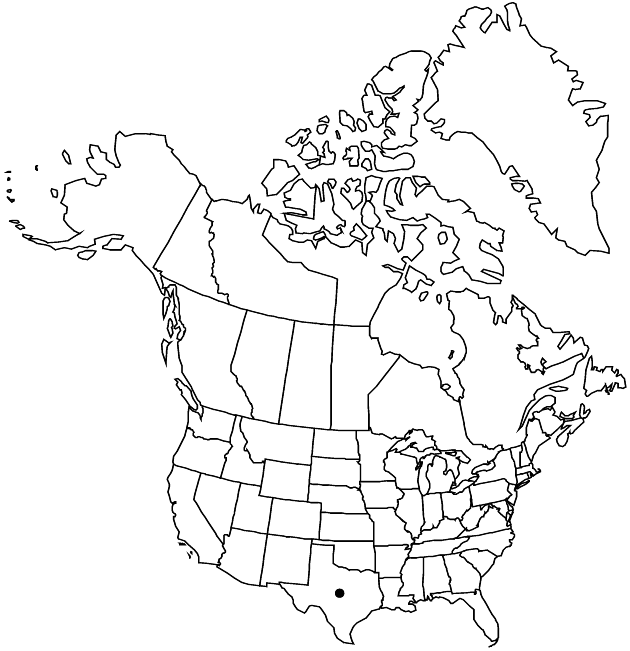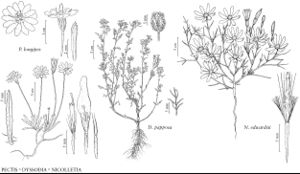Difference between revisions of "Nicolletia edwardsii"
Smithsonian Contr. Knowl. 3(5): 119. 1852.
Illustrated
imported>Volume Importer |
imported>Volume Importer |
||
| Line 49: | Line 49: | ||
|publication year=1852 | |publication year=1852 | ||
|special status=Illustrated | |special status=Illustrated | ||
| − | |source xml=https:// | + | |source xml=https://bitbucket.org/aafc-mbb/fna-data-curation/src/2e0870ddd59836b60bcf96646a41e87ea5a5943a/coarse_grained_fna_xml/V19-20-21/V21_564.xml |
|tribe=Asteraceae tribe Heliantheae | |tribe=Asteraceae tribe Heliantheae | ||
|subtribe=Asteraceae (tribe Heliantheae) subtribe Pectidinae | |subtribe=Asteraceae (tribe Heliantheae) subtribe Pectidinae | ||
Latest revision as of 20:13, 5 November 2020
Annuals or perennials, 3–25 cm. Stems erect to spreading. Leaves 10–60 mm overall, lobes 3–5, linear to filiform, rachis widths hardly greater than lobe widths. Peduncles 5–30 mm. Calyculi of 4–6 bractlets 1–2 mm. Involucres turbinate to fusiform, 11–15 mm. Phyllaries 6–8, lanceolate. Ray florets 7–9, laminae 7–16 × 3–6 mm. Disc florets 15–25(–50); corollas yellow, 7–8 mm. Cypselae 5–7 mm; pappi: bristles 3–5 mm, scales 5–7 mm. 2n = 20.
Phenology: Flowering mostly fall, following rains.
Habitat: Sandy, often calcareous or gypseous soils of fans, flats, or playas in desert scrub
Elevation: 800–1700 m
Distribution

Tex., Mexico (Chihuahua, Coahuila, San Luis Potosí, Zacatecas).
Discussion
Selected References
None.
Lower Taxa
None.
